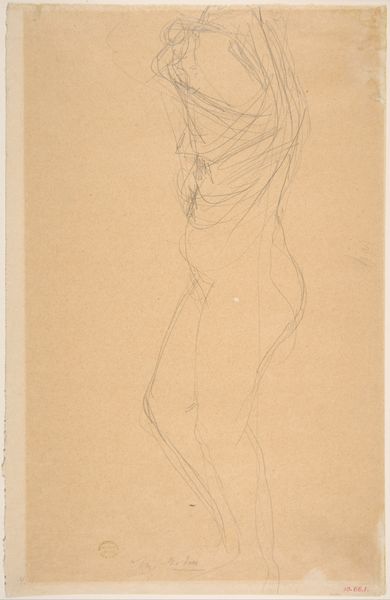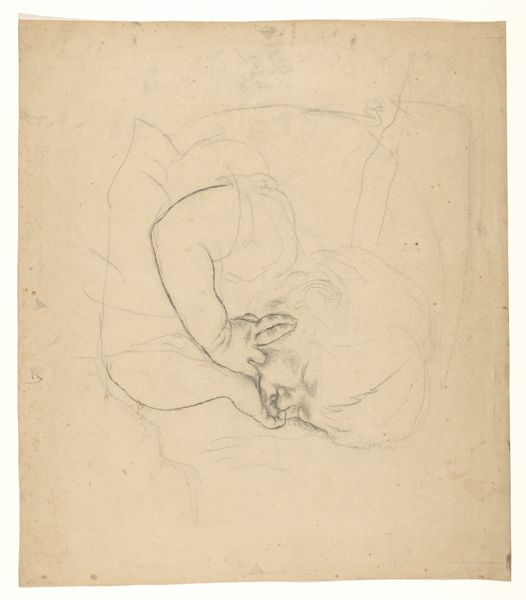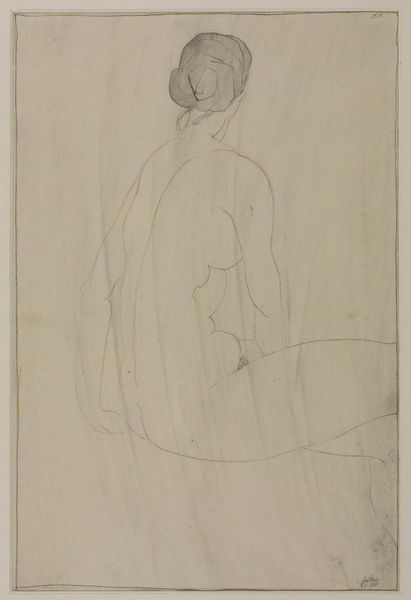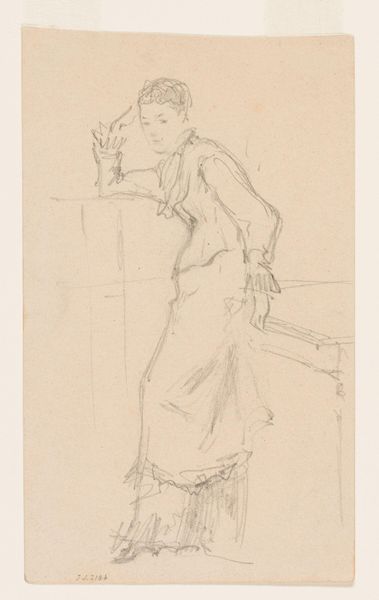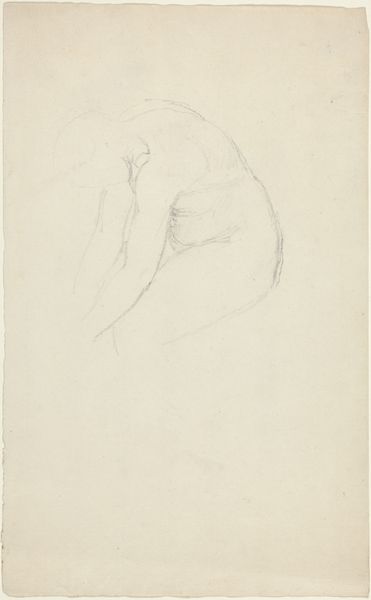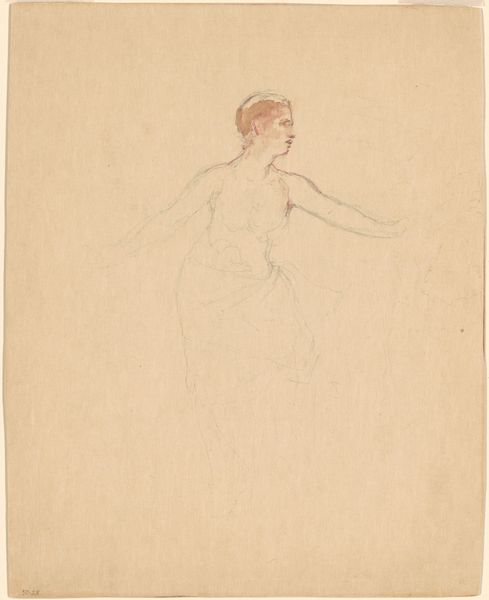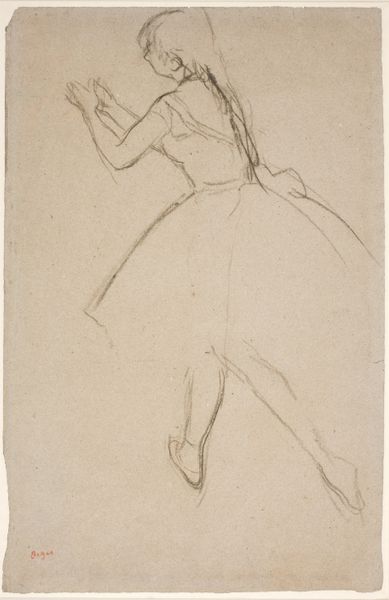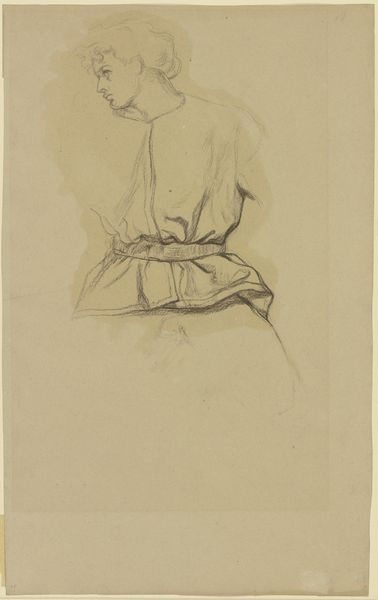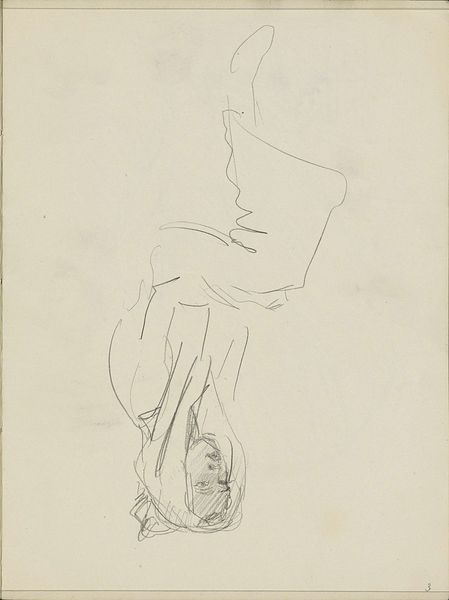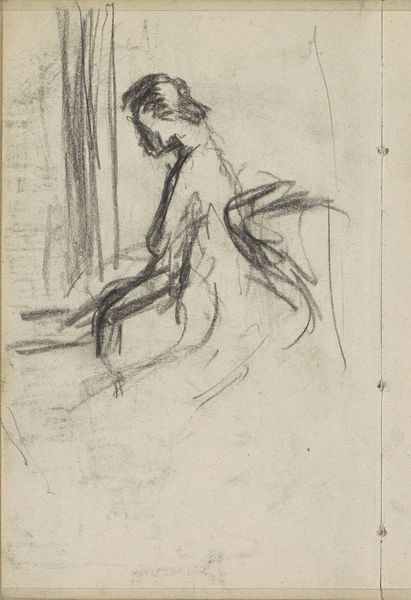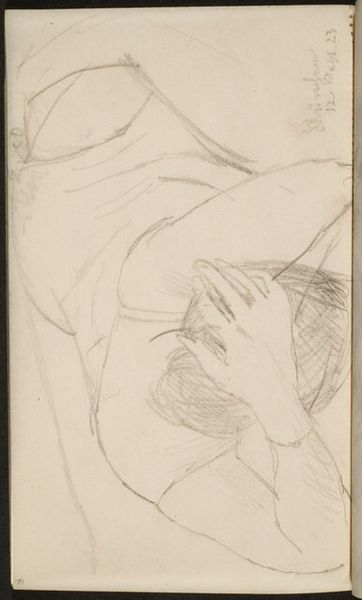
drawing, pencil
#
portrait
#
drawing
#
impressionism
#
figuration
#
pencil
Dimensions: 12 1/8 x 8 9/16 in. (30.8 x 21.8 cm)
Copyright: Public Domain
Curator: Looking at this, I immediately feel a sense of vulnerability. The figure is turned away from us, almost exposed. Editor: Exactly, there’s something quite intimate about this pencil drawing. What we have here is "Study of a Ballet Dancer seen from the Back," completed circa 1875 by Edgar Degas and residing here at the Metropolitan Museum. Curator: Degas has really captured something fleeting. The lines are so delicate, almost like he’s sketched a memory. Notice how her upraised arm could suggest longing or even supplication to a higher power. Her whole posture communicates dedication to a difficult calling. Editor: And consider the social context. Ballet was far from the glamorous affair we might imagine today for many young dancers. For many of them, particularly those from working class backgrounds, it represented a very restricted form of social mobility and a kind of objectification. Degas does show their dedication, as you mentioned, but he also often shows the dancers at rest, in moments of discomfort. Curator: That contrast is fascinating. On the one hand, we have this ideal of grace and beauty, and on the other, a real human being subjected to rigorous training. But I still return to the symbolic power of the raised arm. She's reaching for something, whether it's perfection, artistic fulfillment, or maybe even a connection beyond the earthly realm. Editor: I think there is a melancholy there too; for all that aspiration, perhaps there’s a sense of the compromises being made. The anonymity that Degas creates by showing her from the back can, and maybe should, be seen to raise difficult questions about the individual dancer, the cost of her commitment. Curator: It really invites us to contemplate the complexities that underlie such seemingly beautiful, weightless imagery. Editor: And, perhaps to ask ourselves about the price we assign to beauty and the human cost behind its creation.
Comments
No comments
Be the first to comment and join the conversation on the ultimate creative platform.
